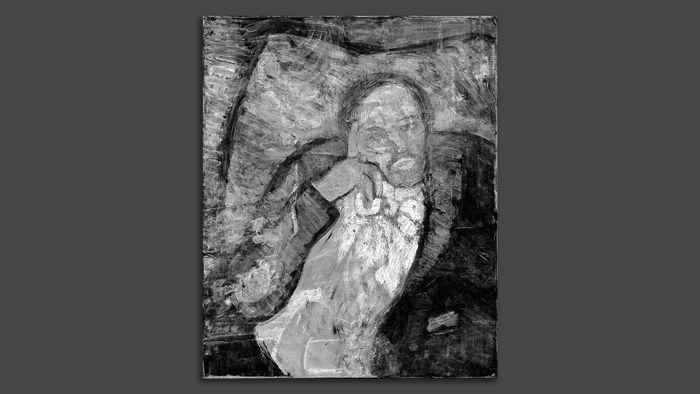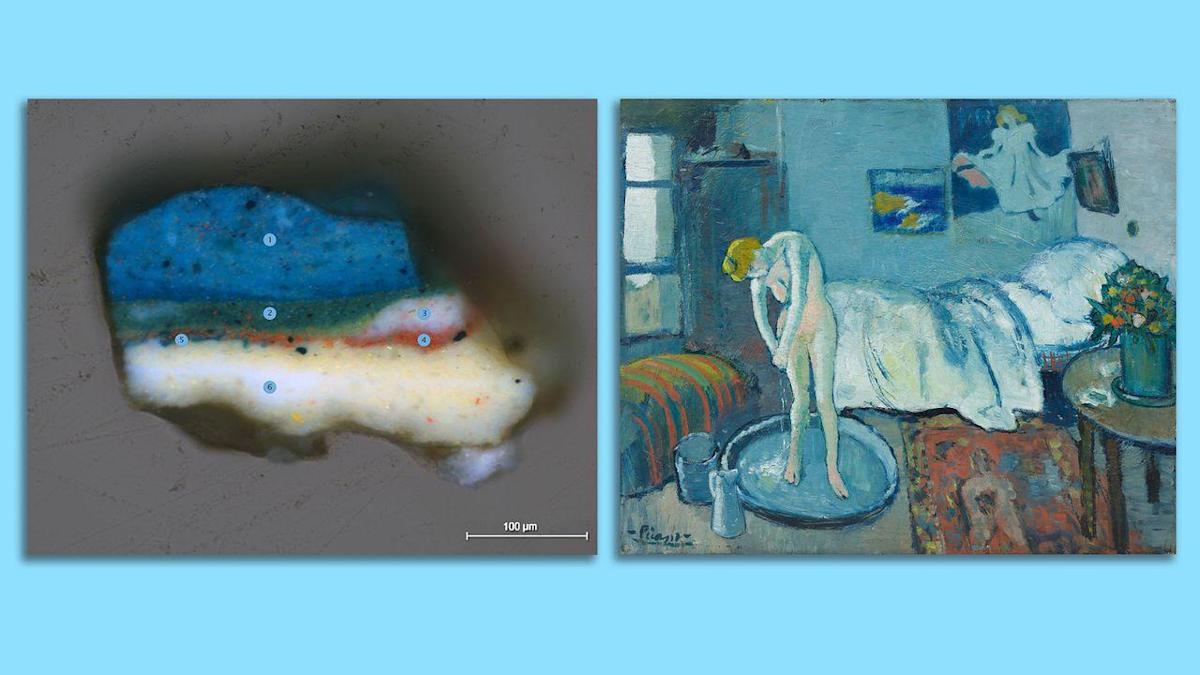Among some of Picasso’s iconic paintings, researchers are finding new details about hidden portraits and compositions.
Why it matters: The discoveries, presented in a new exhibition, offer clues about the artist’s materials and process early in his career – and how to better conserve his work.
Stay on top of the latest market trends and economic insights with Axios Markets. Subscribe for free
“The technical studies” were able to inform art historical research on a new level,” said Patricia Favero, associate curator at the Phillips Collection in Washington, D.C.
-
Favero is part of a team of conservators and scientists who have studied three Picassos now on display in an exhibition on the artist’s Blue Period.
-
Previous studies have used imagery techniques to study aspects of this and other paintings on recycled canvases, which Picasso was known to use.
-
The first indication that there was a painting under “The Blue Room” (1901) was noticed more than 60 years ago. Some of the paint texture reflects brushstrokes in directions other than the composition being seen.
What’s new: Combining data from X-ray, infrared (IR) reflectance imaging spectroscopy and X-ray fluorescence mapping, a team of researchers from the Phillips, the National Gallery of Art and other institutions was able to see a portrait of a man, indicators of the brush and strokes, and the pigments that the artist used. For example, the presence of mercury suggests that he painted with vermilion.
-
Microanalysis of small samples of the painting indicates that most of “The Blue Room” was painted directly on top of the portrait, with no primer, and Picasso’s palette became more subdued.

Infrared reflection image (transform image of the infrared reflection spectroscopic image cube) showing the portrait of an unknown man under Picasso’s “The Blue Room” (1901), The Phillips Collection, Acquired 1927. The canvas is rotated 90 degrees clockwise. Photo: John Delaney and Kathryn Dooley, National Gallery of Art
With IR reflection spectroscopy† the researchers could see shapes under the woman’s right shoulder and forearm in “Crouching Beggarwoman” (1902).
-
Using X-ray fluorescence scanning, the chemical elements in the paint were mapped, revealing information about the stages in which the painting was developed — one arm exposed and later covered.
-
Conservators already knew that a landscape painting — the maker of which is unknown, but its color gamut resembles Picasso’s — was beneath the portrait, but the analyzes yielded new details about how the hills in the painting later became the crouching woman’s back. .
A map of the elements in the painting of “The Soup” (1903), Picasso suggests the shape of the bowl offered by a woman to a child and that he changed the woman’s gesture and how her hair fell from her forehead.
It comes down to: “There is still more to learn from some of the world’s most studied paintings,” says Favero.
More from Axios: Sign up to get the latest market trends with Axios Markets. Subscribe for free

